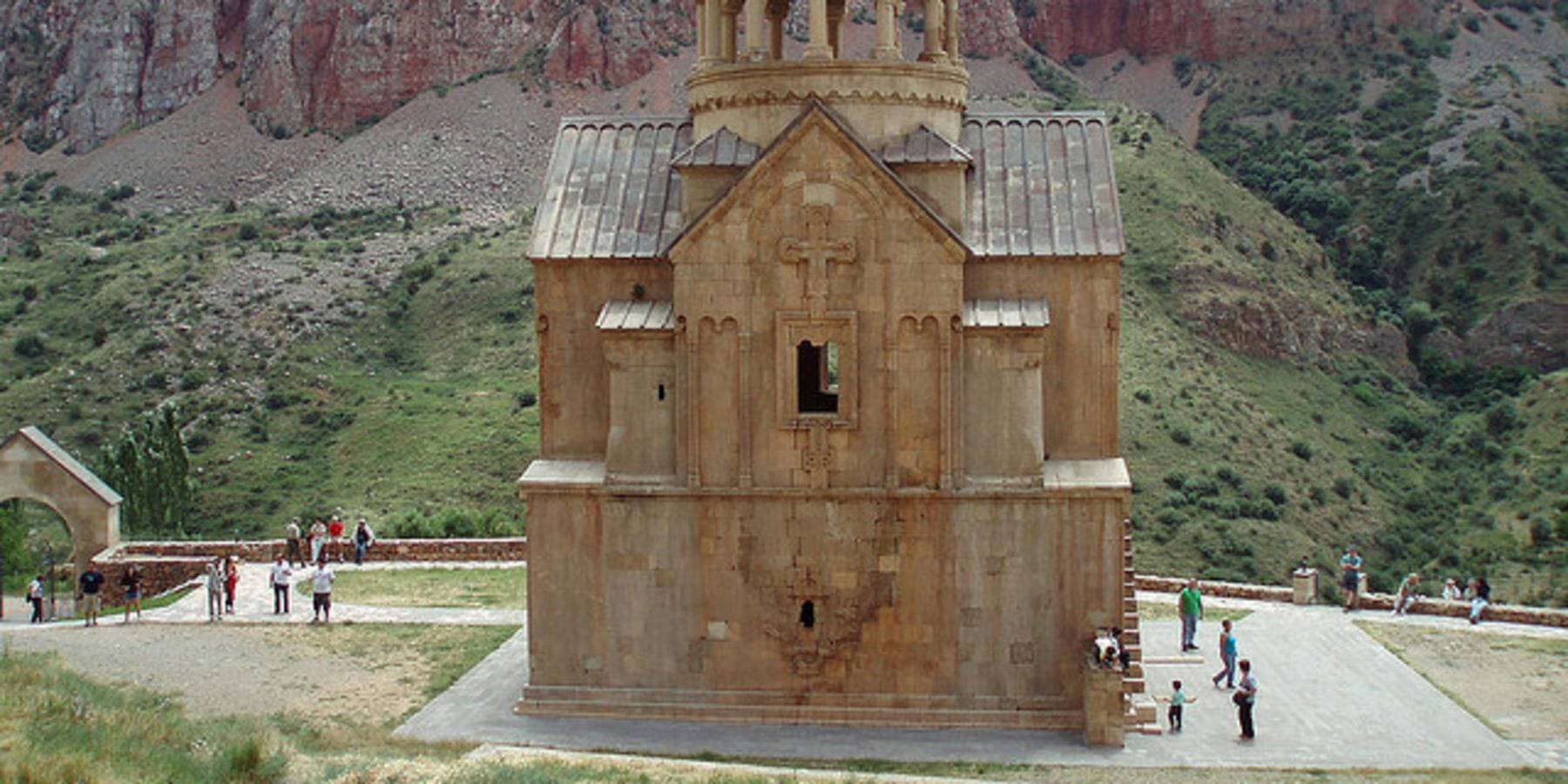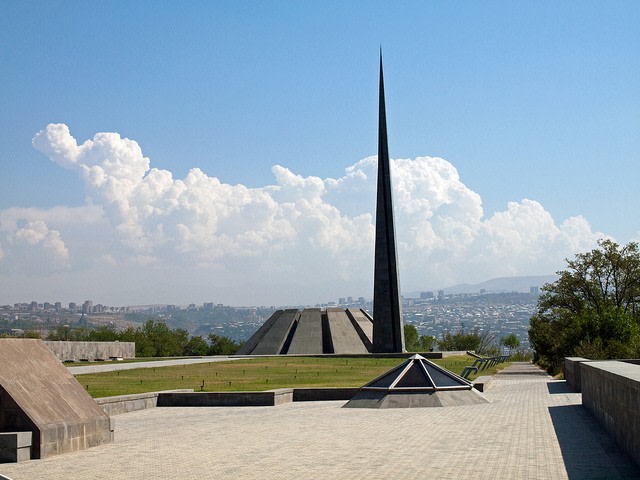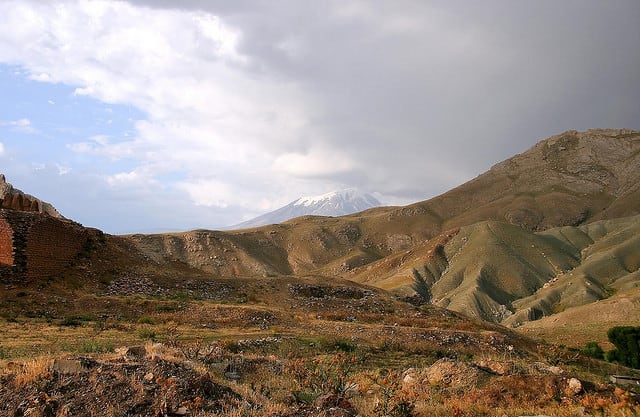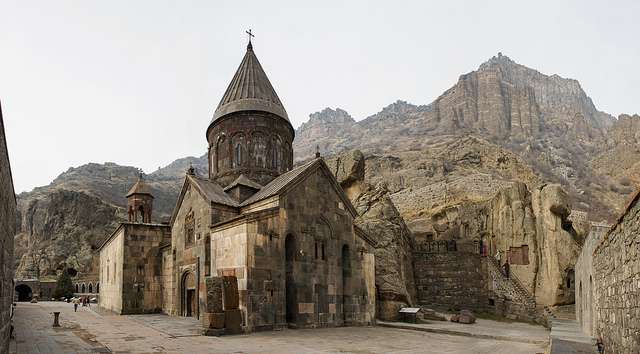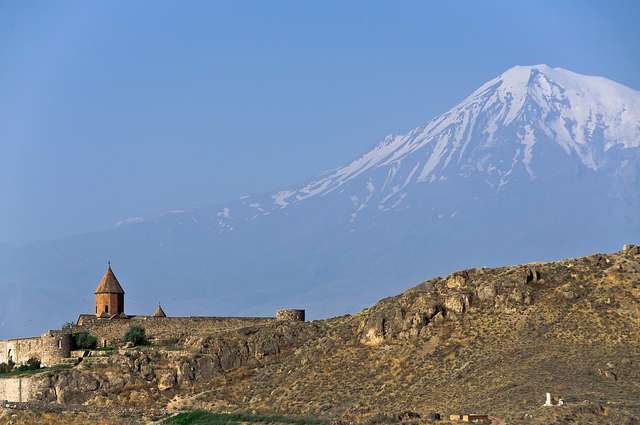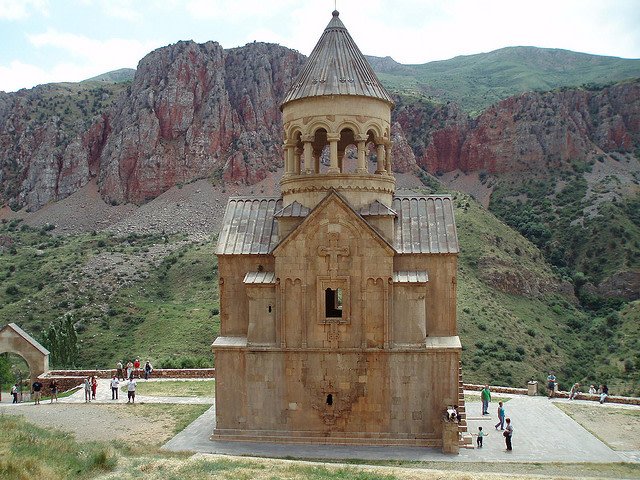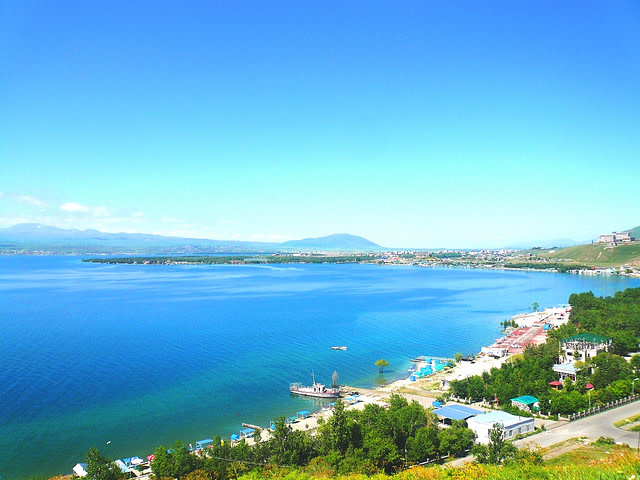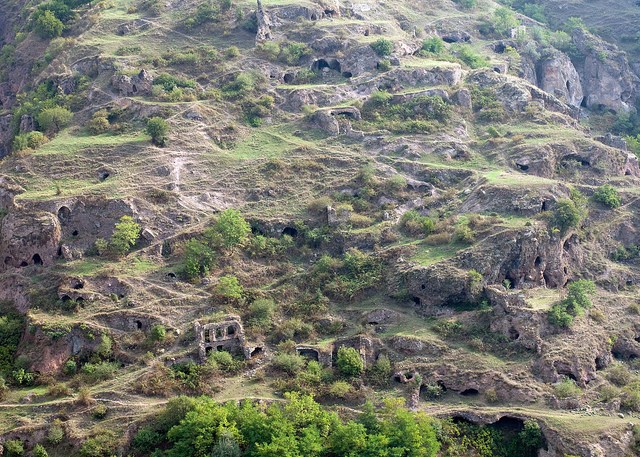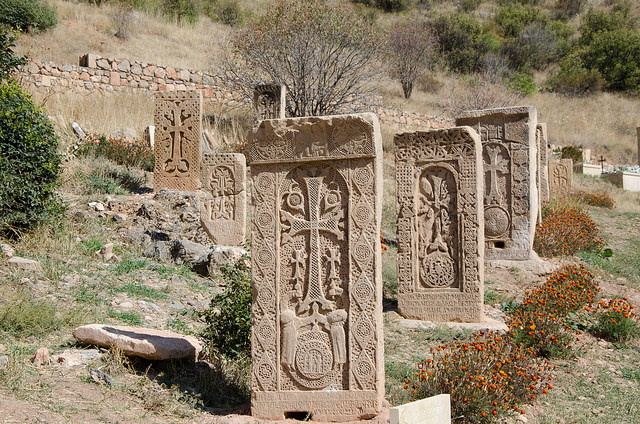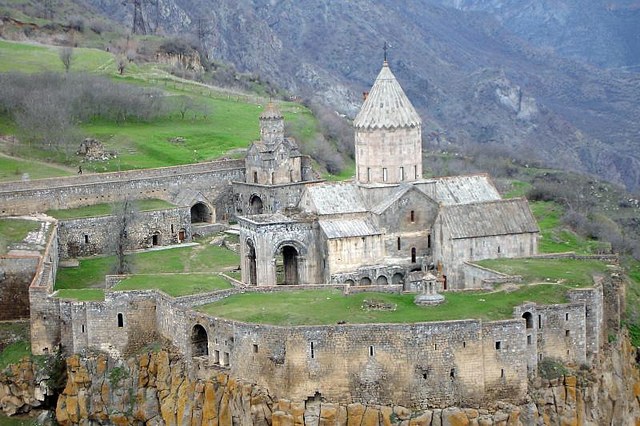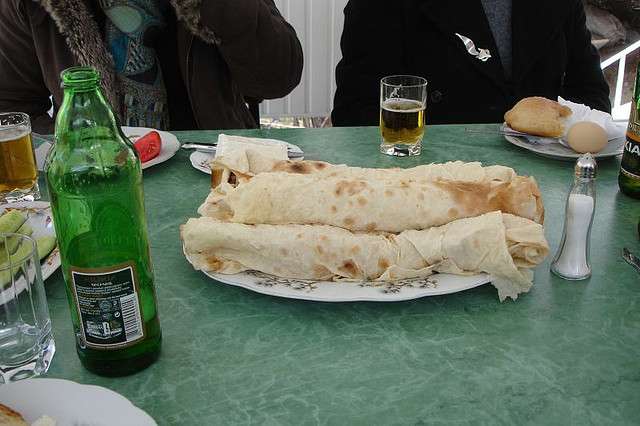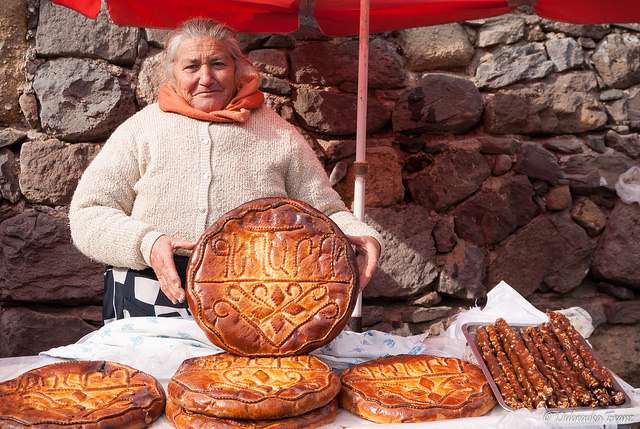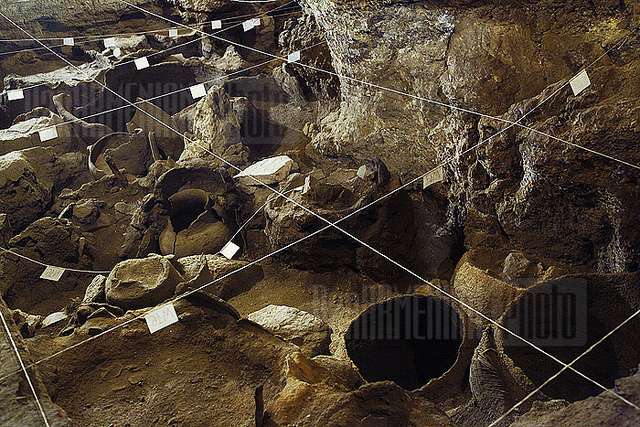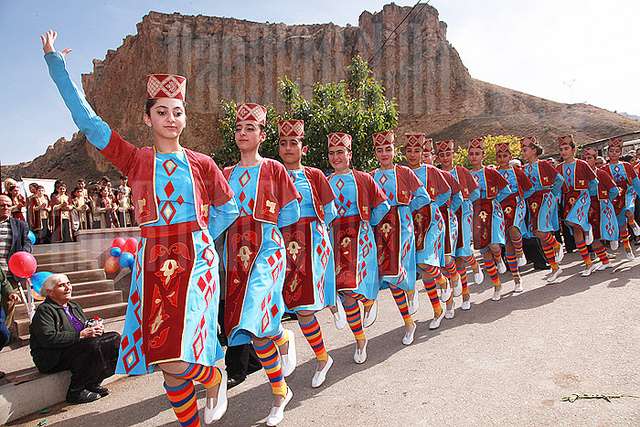| 7 mins read
By Jennifer Mullen
Armenia has received a great deal of press coverage in early 2015, thanks to the visit of Kim and Kayne. Rumour has it the pair had even been taking lessons in the Armenian language for the trip! The purpose of the visit may have been sombre (the centenary of the 1915 genocide) and the limelight was short lived, but on a positive note the visit will hopefully raise Armenia’s profile as an untapped and extremely interesting travel destination.
Armenia is a small Eurasian country located in the Caucasus Mountains region, with a population of approximately 3 million people (although it is estimated that a further 8 million live in other countries, such as USA and Russia). The country is bordered by Turkey, Georgia, Azerbaijan, Iran, as well as the de facto independent state of Nagorno-Karabakh. The Armenians are an ancient nation of people, residing on the giant plateau spread out from Mount Ararat, upon which the bible tells that Noah’s Ark came to rest.
For more than 3000 years, Armenia has struggled to preserve its identity and for a large part of the 20th century, the country was part of the Soviet Block. The Red Army has gone, but Russian influence is still strong, an example being the number of Lada cars on the streets. Apart from the Kardashians, famous celebrities of Armenian descent include Cher and Dita von Teese. Everyday Armenians have the reputation of being welcoming and down-to-earth.
Most visitors to Armenia enter via the capital city, Yerevan, which at 2790 years old is now a flourishing centre for Armenian culture. History enthusiasts will be captivated by the Museum of Ancient Manuscripts, which displays books dating back as far as the 9th Century. Likewise the Genocide Memorial, The Armenian Museum and the Museum of Russian Arts will give you a really good understanding of how the past has shaped this country. As tourism is still an emerging industry, it is advisable to hire an English speaking Yerevan tour guide, in order to fully appreciate the centuries of history. A short drive from Yerevan is the Monastery of Geghard, named after the tip of the lance, which is claimed to have been put into Jesus during crucifixion. The dramatic architecture is partially carved out of the cliffs, which result in amazing acoustics.
Another Monastery worth visiting is the Khor Virap, as on a clear day you are able to get picture perfect photographs of Mount Ararat (which is actually located over the border in neighbouring Turkey).
Thanks to King Tiridates III, Armenia was the first country in the world to adopt Christianity, in fact way before the Roman Empire. The result of this is a landscape punctuated by striking churches, for example the St. Ghazanchetsots Church and the Cathedral of Echmiadzin, which regardless of your religious beliefs should be on any Armenian itinerary. The same applies to monasteries and it is worth taking the time to explore many of these ancient structures. One such monastery is Noravank Monastery, which is surrounded by dramatic mountains, often covered with snow.
Another impressive day trip from Yerevan includes visiting the Sevanavank Monastery, and then heading to Lake Sevan itself. Locals refer to this lake as the “Sea of Armenia”, since Armenia is otherwise a landlocked country. At 2000 metres above sea level, the lake is one of the highest in the world. Lake Sevan is clear, clean and many restaurants serve locally caught fish. It is also famous for being many shades of blue, ranging from turquoise to dark navy. If you go there late July, try to see the “Day of Water”, where local boys try to drench everything around them with water from the lake.
In the Goris region of Armenia, a major attraction is the cave town of Khndzoresk, whose earliest inhabitants date back to over 1000 years ago. Not only are there natural caves, but an abundance of man-made structures, carved from the rock, such as churches, shops, schools and dwellings. A knowledgeable Goris tour guide will be able to bring to life the struggle of the people who lived here, against the mighty Ottoman Empire.
When visiting Armenia, you will notice an abundance of “khachkar”, or Armenian cross-stones. These are carved memorial stone slabs, bearing a cross or other motifs and are listed by UNESCO as culturally significant landmarks. If you visit the Debed Canyon, you can see some good examples of khachkar, as well as two heritage listed monasteries of Haghpat and Sanahin, with their fascinating decorative detailing.
In fact one of the trickiest tasks for a traveller to Armenia is to pick your favourite monastery, as there are quite a few to choose from. If “most dramatic location” is a factor in your decision, no trip would be complete without viewing the Tatev Monastery, situated high on a large basalt plateau. It literally looks like it is crouching on the side of the hill.
Armenian cuisine reflects its location at the crossroads of Europe and Asia; therefore it has many influences from its neighbours, such as Persian, Turkish and Georgian. The food for centuries has been based on traditional crops grown and animals raised on the land, plus an abundance of fresh herbs. Start your initiation into Armenian cuisine with “harissa”, a porridge made of boiled wheat (burghul) along with meat such as lamb, beef and chicken.
The traditional bread in Armenia is Lavash, or if you are in the mood for trying something a bit more elaborate, Zhingyalov hats containing cranberries, pomegranate molasses, as well as several different greens, such as parsley, spinach and dill. The sweet bread Gata is widely available, some of its varities so well adorned, that one would think twice beore biting in!There is also an interesting dish called khash, made of boiled cow’s feet, which your Armenian tour guide will assure you is entirely optional.
No trip to Armenia would be complete without trying the local brandy, Konyak, which is so popular it was even served at the Yalta conference in 1945 (although there are no records of Stalin, Roosevelt and Churchill playing drinking games together). Armenia is not at the forefront of global wine production, as say Italy or France, but wine has been produced here from as early as the 9th century BC. According to the Bible, Noah himself planted grapes on the slopes of Mount Ararat. Archaeologists have even found in a fortress, Teyshebaini, an ancient wine storehouse with 480 clay pots (karases), which would hold 37,000 decilitres of wine!
This is proof that wine has always played an important role in Armenian culture, along with food, dancing, family and friends. Do be careful if someone empties the last few drops of wine in your glass though, as this obligates you to buy another bottle!
Armenia is a country going through a rapid modernisation process. The travel experience can vary according to your taste, such as upmarket boutique hotels in Lake Sevan and Yerevan, or the down-to-earth charm of rustic accommodation in more rural regions. From monasteries perched on hills to monuments commemorating the past, a trip to Armenia promises something unique for every traveller to experience.
Image Details and Licenses:https://flic.kr/p/8ETTTo(Shaun Dunphy,CC BY-SA 2.0),https://flic.kr/p/4qeSCN (Scott MacLeod Liddle, CC BY-NC-ND 2.0), https://flic.kr/p/8Gqrbx (Shaun Dunphy, CC BY-SA 2.0), https://flic.kr/p/dsv8Ht (Oleg Sidorenko, CC BY 2.0), https://flic.kr/p/awkoXd(Franck Zecchin,CC BY-NC-SA 2.0), https://flic.kr/p/3m93T8(DAVID HOLT,CC BY-SA 2.0), https://flic.kr/p/2GX7Up(Beauty Hunter...,CC BY 2.0),https://flic.kr/p/8Qzu2b(Shaun Dunphy,CC BY-SA 2.0),https://flic.kr/p/iqjhLo(Matt Werner,CC BY-NC-SA 2.0),https://flic.kr/p/dUfp2H(Carsten ten Brink,CC BY-NC-ND 2.0),https://flic.kr/p/Lc5KG(Carsten ten Brink,CC BY-NC-ND 2.0),https://flic.kr/p/rdytjn (DubeFranz , CC BY-NC-ND 2.0), https://flic.kr/p/9bhUWC (PAN Photo, CC BY-NC-ND 2.0), https://flic.kr/p/8LkJSd (PAN Photo, CC BY-NC-ND 2.0)

